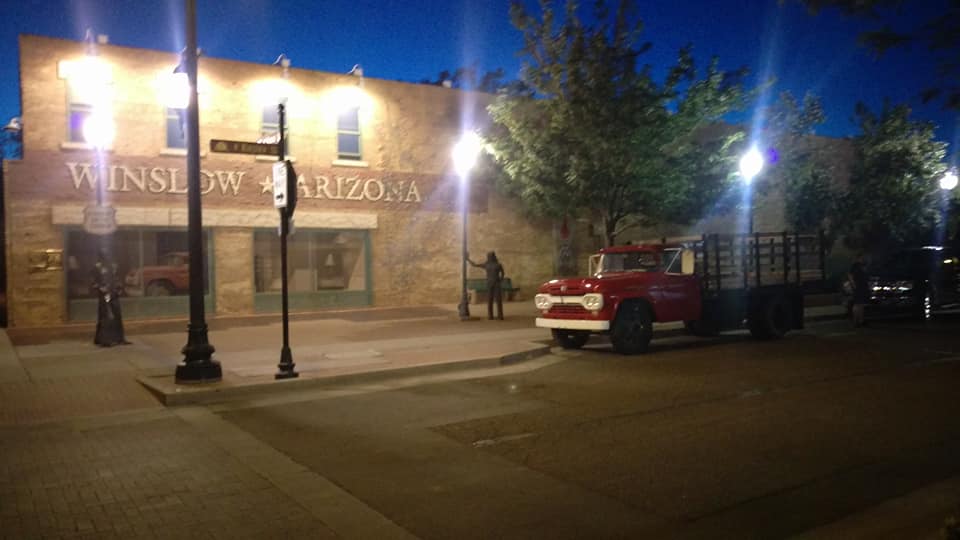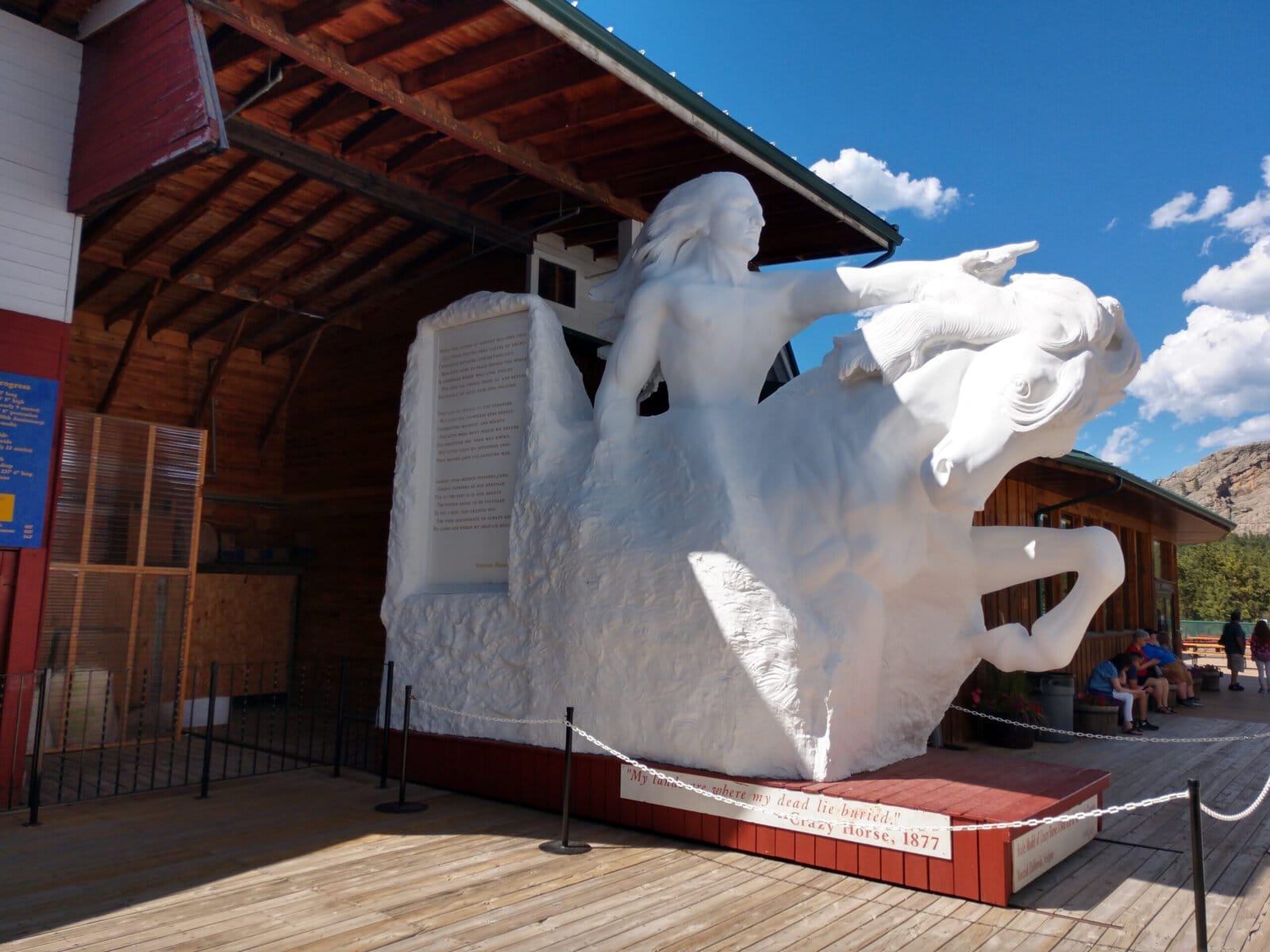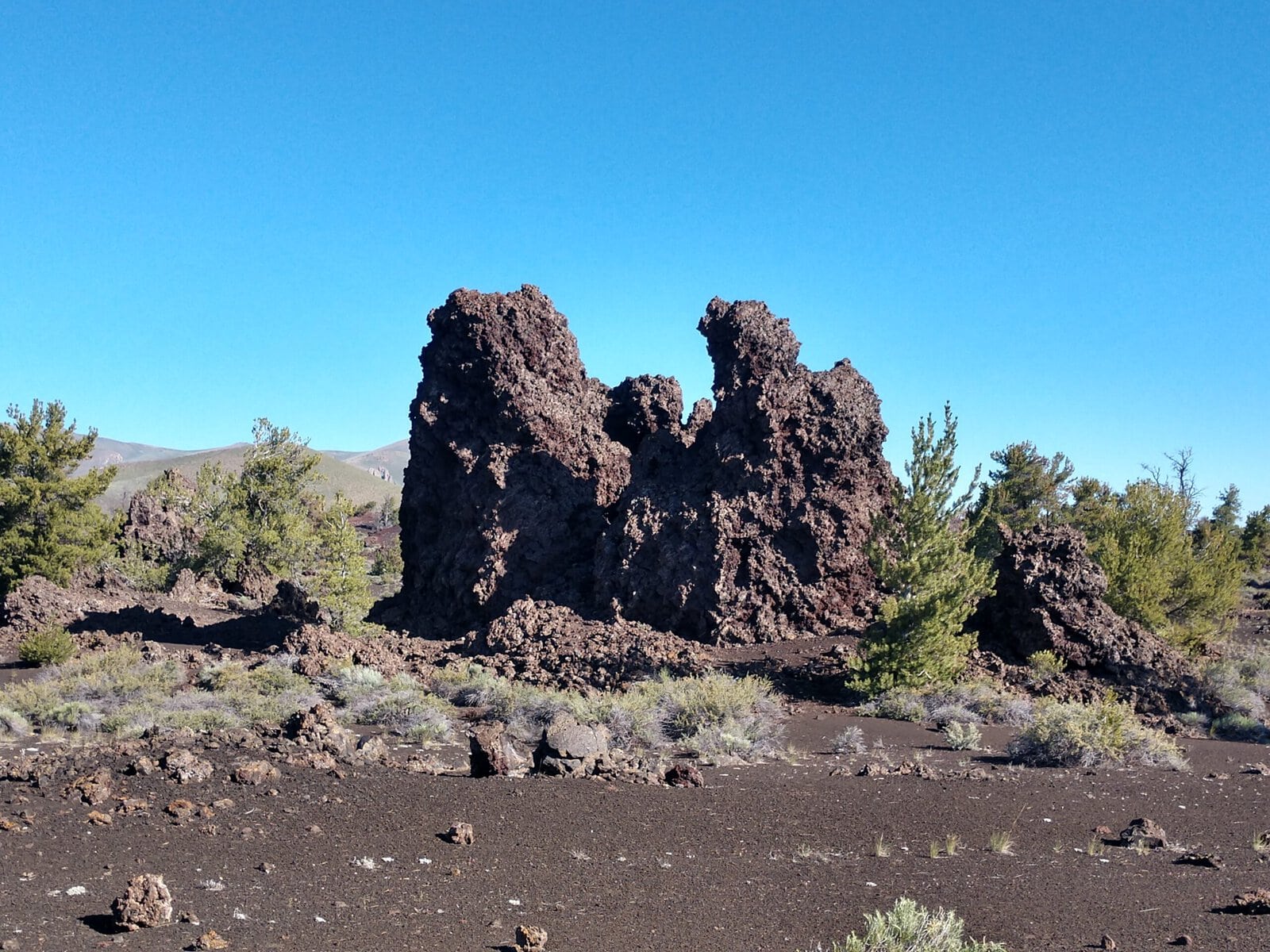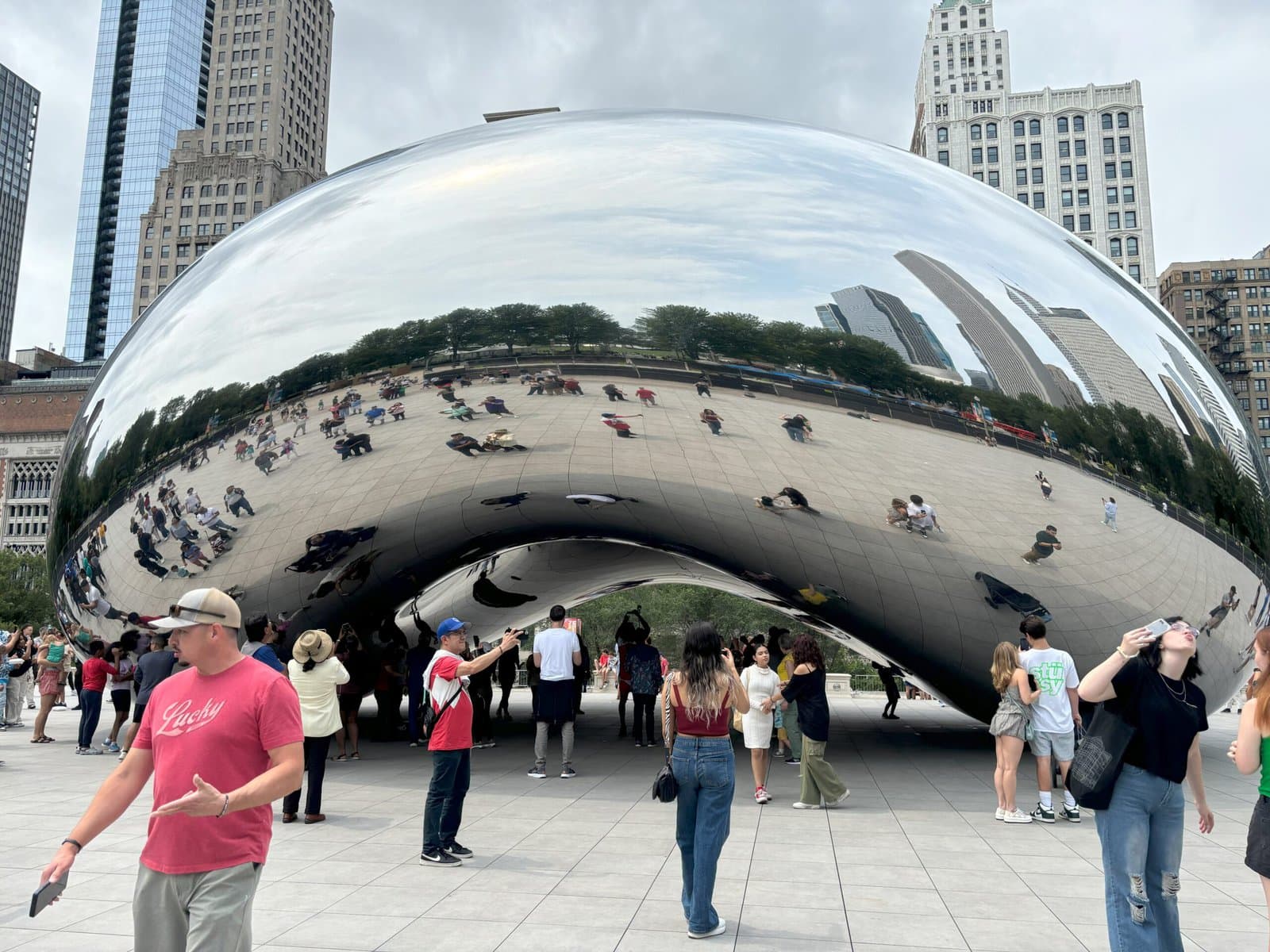San Francisco to Redwood National Park: Your Ultimate Road Trip Guide
Highway 1 in Northern California offers one of the most scenic and adventurous road trips in the United States. This iconic route winds along the rugged coastline, passing through charming small towns, dramatic cliffs, and dense redwood forests. We are going to travel from San Francisco to Redwood National Park.
From exploring hidden beaches and historic lighthouses to walking among the tallest trees on Earth, Northern California’s stretch of Highway 1 is filled with incredible stops that showcase the region’s natural beauty and rich history.
If you’re looking for outdoor adventures, unique local attractions, or a quiet spot to enjoy the stunning ocean views, this guide will take you through some of the best places to explore along an unforgettable road trip.
How long is the drive from San Francisco to RWNP via Highway 1?
Driving from San Francisco to Redwood National Park offers two scenic routes: the iconic Highway 1 and the faster Highway 101.
If you’re craving adventure and breathtaking coastal views, Highway 1 is the way to go. This route will take you about 8 to 9 hours without stops. This is three hours longer than 101.
This route is a bit windier, but it passes through charming coastal towns and offers stunning views of the Pacific Ocean. With the windiness, I do recommend you pack some dramamine.
Whichever way you choose, be mindful of the toll bridges around San Francisco. If you are making a round-trip journey and coming back into the city, the Golden Gate Bridge will cost you $9 to get back in.
And don’t do like we did the first time and not be ready with your camera… we ended up having to turn around and go back in a second time!
How to get to Redwood National Park
Upon arriving at San Francisco International Airport (SFO), you can easily pick up a rental car and begin your adventure up the coast.
- To start the journey to Redwood National Park via the scenic Highway 1, exit the airport and follow signs for US-101 North.
- Shortly after merging onto US-101 North, take the exit for I-380 West toward I-280.
- Continue on I-280 North, a beautiful freeway flanked by nature, until reaching the exit for Highway 1 North toward Pacifica. This will lead you onto the famed Pacific Coast Highway (Highway 1).
Best Time to Visit to Visit Redwood National Park
Early spring
Since the weather is nice year-round in Redwood National Park, early spring and fall are the best times to visit. Part of the reason is that you can avoid crowds while enjoying warmer weather. In addition, if you visit in April or May, the flowers will be in bloom.
Late spring to early fall
July and August are high season, so you should avoid those months. The Northern California section of Highway 1 is not as busy as the Los Angeles area, so don’t get too stressed. However, crowds will be in more popular tourist destinations if you take this time.
September and October
The weather is still warm enough to enjoy Redwood National Park, but the summer crowds have gone home. It can get chilly north of San Francisco, but some say the weather is great, and there are few crowds in October. And you will be getting that perfect fall weather on the coast? Sounds like a win to me!
Winter
You should check for road condition updates, as excess rain can cause mudslides and road closures. You should also be careful to watch out for falling rocks or snapped tree branches while driving. Otherwise, these cities, like most others in the US, go big for Christmas, so it might be a magical time to visit!
What to Pack for Redwood National Park
- Dramamine: If you are one to get queasy on the road, this is a must because Highway 1 is very windy.
- Raincoat: Essential for the frequent rain in Northern California, especially along the coast.
- Lots of Layers: Mornings can be chilly even in summer, so layers are key for adjusting to changing temperatures throughout the day.
- Long Pants are helpful for warmth and protection, whether exploring coastal trails or enjoying a cool evening by the ocean.
- Swimsuit with a Rashguard: Perfect for enjoying the beach while protecting from the sun and wind.
- Wool Socks: Great for keeping your feet warm and dry, as they wick moisture away effectively.
- Comfortable Walking Shoes: These are ideal for exploring trails and towns; consider waterproof shoes to keep your feet dry in wet conditions.
- Waterproof Shoes: Important for rainy days and muddy trails, ensuring your feet stay dry.
- Hoodie: A versatile piece that can provide warmth on cooler days and evenings.
- Hair Ties: Handy for keeping your hair out of your face during windy or outdoor activities.
- Sunscreen and Sunglasses: Essential for protecting your skin and eyes from UV rays.
- Portable Charger: This keeps your devices powered throughout the day, ensuring you can capture all your adventures.
- Reusable Water Bottle: Staying hydrated is vital, especially when outdoors.
- Hat and Gloves: Even in warmer months, mornings and evenings can be brisk. A hat and gloves will help keep you warm.
- Travel Blanket: Useful for picnics, beach visits, or staying cozy during breaks.
- Snacks: Pack some healthy snacks for the road, especially for the more remote stretches of Highway 1.
Starting Point: San Francisco
Before you start your adventure, it is essential that you fuel up.
Home Coffee Roasters
Home Coffee Roasters is a great spot to start your morning at 1222 Noriega St. They serve fantastic, Instagram-worthy coffee.
I recommend trying their birthday cake latte, which threw me for a loop the first time I saw it. Its vibrant colors inside the latte art were amazing. Even better? They add sprinkles on top!
Presidio of San Francisco
Once you’ve got your caffeine fix, head to the Presidio of San Francisco for photo opportunities of the Golden Gate Bridge.
While there, consider spending a couple of hours at the Walt Disney Family Museum. This museum is a must-visit for any Disney fan like myself. It offers a deep dive into the life and legacy of Walt Disney.
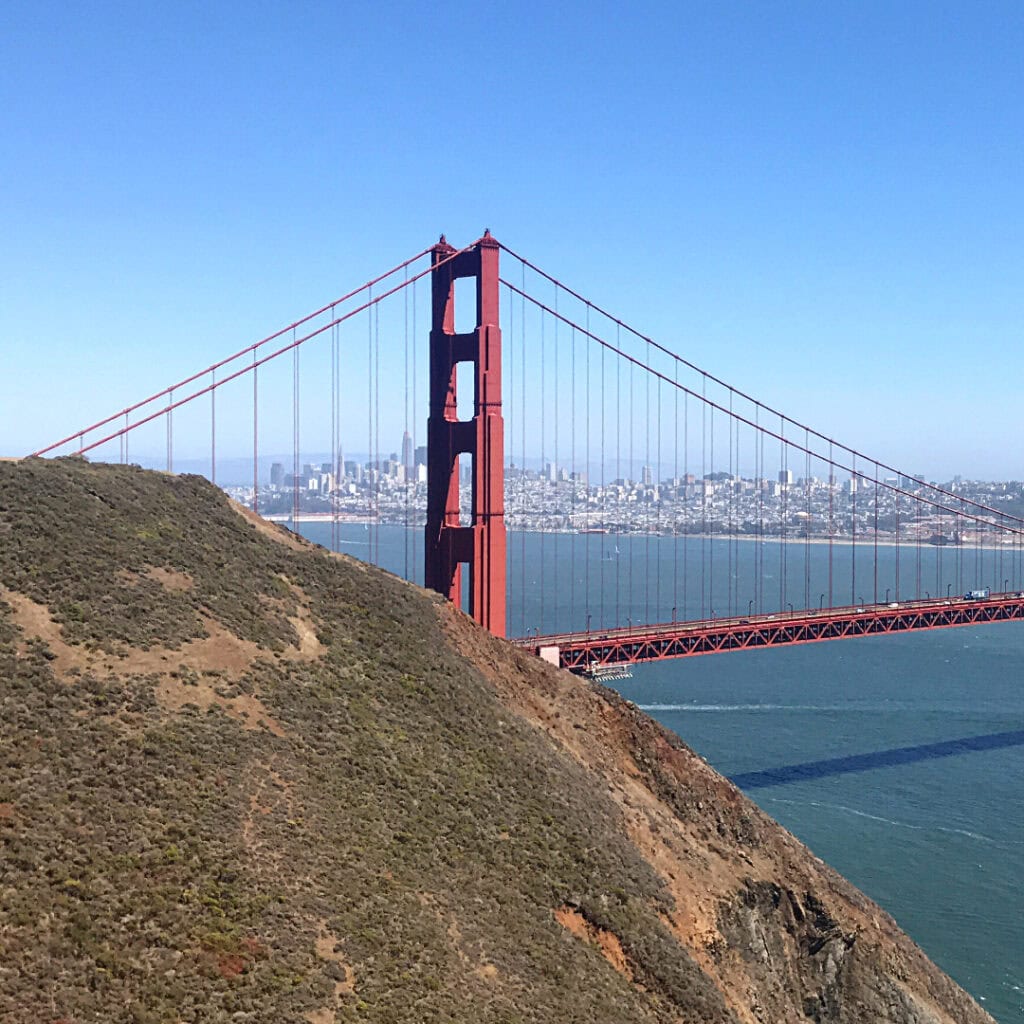

Sea Ranch Chapel
As you make your way up Highway 1, the Sea Ranch Chapel is worth stopping at.
Open from sunrise to sunset, this unique chapel is dedicated to the memory of Kirk Ditzler. The Sea Ranch Chapel is a non-denominational prayer, meditation, and spiritual renewal sanctuary.
You will see it at mile marker 55.5, and then you will understand why it’s worth stopping.
The exterior is constructed of dried and meticulously molded redwood siding, creating a stunning shell-like structure. It is also adorned with beautiful stained glass windows, adding a vibrant, colorful touch to the atmosphere.
Gualala
The area of Gualala was just a stop on our trip for gas, but I fell in love with the area thanks to Surf Market, a local grocery store in the ocean. My family was super sweet and obliged me while I toured the shop, and then we went outside, where they were making BBQ over an open fire pit.
Surf Market Gualala
Let’s discuss it a bit more in-depth, and I hope you’ll fall in love with it like I did.
This locally owned store offers a refreshing alternative to big-chain grocery stores. It focuses on high-quality, environmentally conscious, and organic foods.
One of Surf Market’s most charming aspects is how it celebrates its connection to the community. As you browse the aisles, you’ll notice walls adorned with photographs of the local farmers who supply much of the store’s produce. This personal touch highlights the sense of connection to the land and the people who cultivate it.
For chocolate lovers, Surf Market carries a delightful treat from down south—John Kelly chocolates crafted in Hollywood. These decadent chocolates perfectly exemplify the store’s commitment to stocking unique, high-quality products. If you’ve never had John Kelly before, see if a store near you carries it. In Texas? Central Market is where I got my first taste of this sweet treat.
Okay, okay, enough about John Kelly.
Surf Market’s mission statement proudly states, “We believe that locally crafted, environmentally conscious, organic foods are better, and spending a few more dollars to support a locally owned store creates far more community benefit than enriching massive corporations.” This ethos is evident in everything they do, from sourcing products to engaging with the community.
In keeping with its commitment to sustainability, Surf Market is also upgrading its refrigeration systems to lower its carbon footprint. This effort demonstrates its dedication to providing great products and caring for the environment.
Since you are about two and a half hours north at this point in your journey, make this your lunch stop. And as you stock up on provisions for your trip, you can feel good about supporting a store that truly values community and sustainability.
Gualala Point Regional Park
After picking up some delicious local goodies from Surf Market, head to Gualala Point Regional Park for a picturesque picnic.
This park features an expansive beach and estuary where the Gualala River meets the sea. The park’s diverse landscape also includes a small, forested campground along the river. If you have more time on your trip, this would be a great place to stop for the day since it offers a serene setting for those who want to spend the night under the stars.
While enjoying your picnic, look for seals basking on the shore or playing in the surf. If you want to explore further, several trails connect the beach and campground to the coastal bluffs and the nearby Sea Ranch community to the south. These trails offer stunning views of the Pacific Ocean and are perfect whether your hiking style is a stroll or a more vigorous hike.
Stop by the Gualala Point Regional Park Visitor Center if you’re visiting on a weekend. Open most weekends, the center provides fascinating information on North Coast history, Native American heritage, the Gualala River, and the marine environment. It’s a great way to enrich your visit with local knowledge and learn more about this beautiful region.
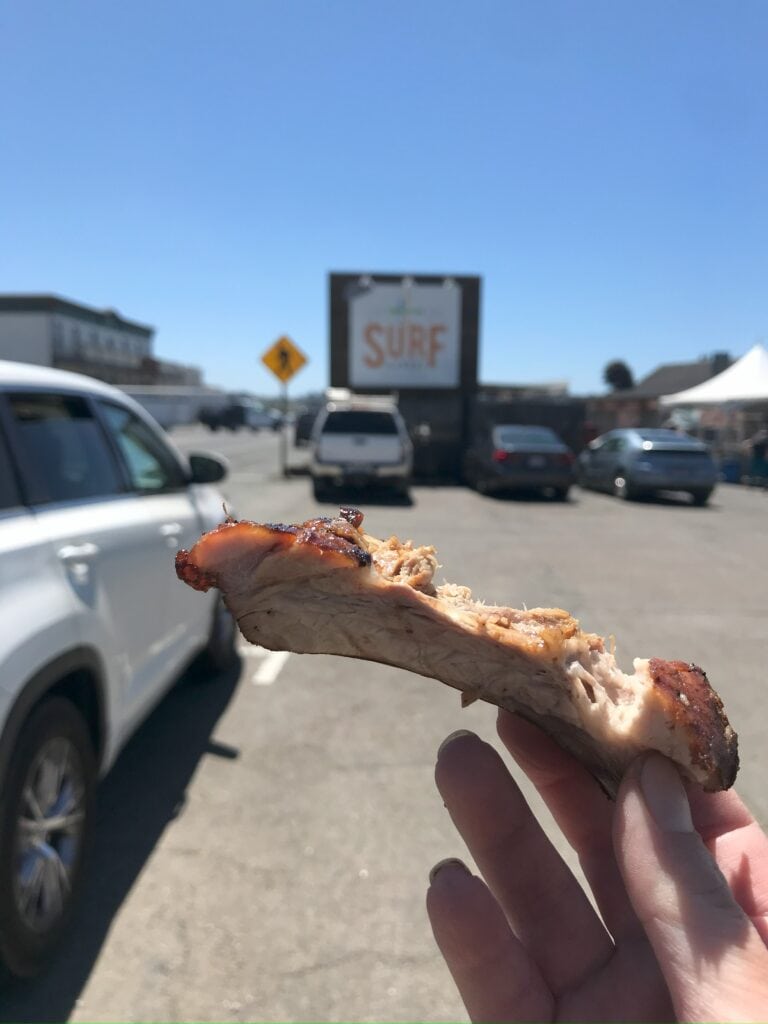
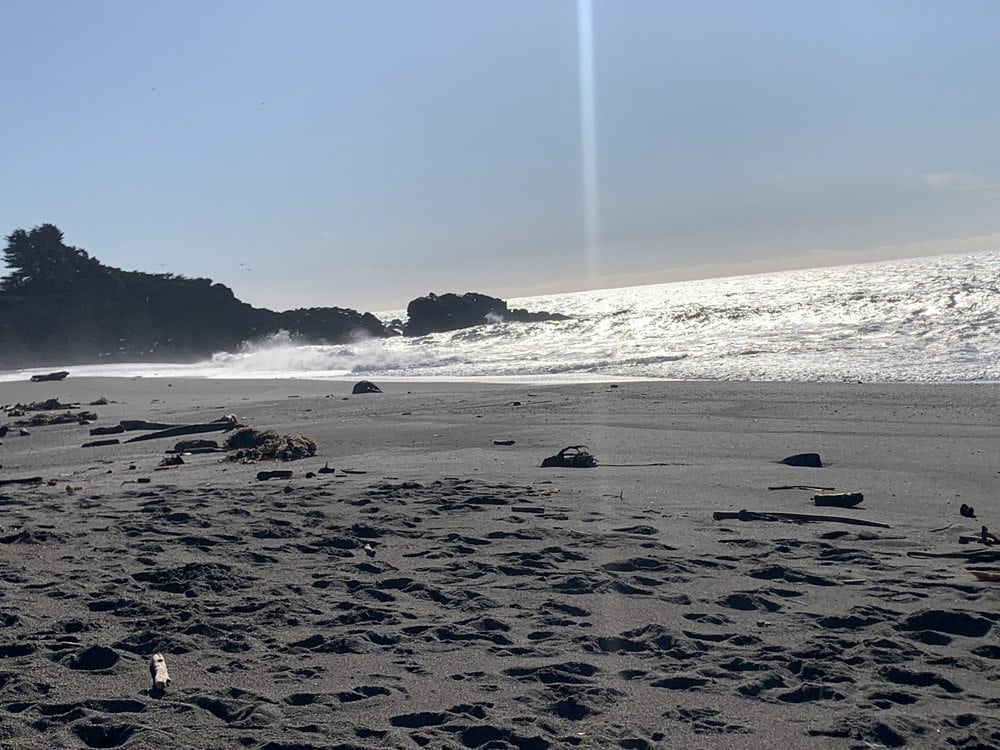
Point Arena Lighthouse
Half an hour north of Gualala sits the Point Arena Lighthouse. In addition to it’s breathtaking views of the Pacific Ocean, visitors can also see Manchester Beach and the Point Arena/Stornetta Unit of the California Coastal National Monument.
Visitors to the lighthouse can explore the Light Station Store and the Indoor and Outdoor Museums for five dollars.
The Fog Signal Building Museum, located indoors, provides a fascinating look into the light station’s history and technology, showcasing how it has guided sailors safely through these rugged coastal waters for over a century.
The outdoor museum spans 23 acres and features unique stone installations and art, native plant gardens, blufftop hiking trails, and several scenic spots perfect for spotting migrating whales and seabirds.
If this is the point where you want to end your day and experience something unique, the Point Arena Lighthouse guests have the opportunity to spend the night at the light station. This experience lets you fully appreciate the serene surroundings and star-filled evening skies.

Fort Bragg
The next two areas along the route are beaches worth a stop.
First up is Glass Beach in Fort Bragg.
This beach’s fascinating history stems from its past as a dump site in the early to mid-1900s. Back then, locals disposed of various types of trash directly into the ocean, including glass. By 1967, the California State Water Resources Control Board and city leaders closed the area to prevent further environmental damage.
Over the decades, multiple cleanup efforts were undertaken to restore the site, but nature transformed this once-polluted place into something extraordinary. The ocean’s relentless waves have broken down and smoothed the discarded glass into small, colorful pebbles that now cover the beach, creating a beautiful, glittering landscape.
Consider arriving at sunrise to make the most of your visit to Glass Beach. This will allow you to enjoy the beach’s beauty while avoiding the crowds that gather later in the day.
Getting There:
- To find Glass Beach, turn onto Elm Street near the Denny’s on the north side of Fort Bragg.
- Drive to the intersection with Glass Beach Road and follow the signs to the parking lot. The good news is that parking is free!
- The beach is accessible by taking a small dirt trail. It is about a quarter-mile hike from the parking area.
Glass Beach will likely be a quick stop on your journey, perfect for a brief exploration and some memorable photos. Just remember to leave no trace! The glass should be left where you found it so that others can continue to enjoy this beautiful spot.
Black Sands Beach
The Black Sand Beaches in Humboldt are a stunning destination for those seeking a more secluded and dramatic stretch of coastline.
Located just north of Shelter Cove, this expansive beach stretches for 3.5 miles and features striking black sand and offshore reefs.
Formed from the region’s rich volcanic soil and rugged coastline, the black sands give this beach its distinct appearance.
The best time to visit is at low tide when the beach is more accessible. You can explore the fascinating tide pools and witness the intricate patterns left by the receding waves.
Getting There:
- As you descend the winding road into Shelter Cove, turn right onto Beach Road, leading you directly to Black Sands Beach.
- You’ll know you’re in the right place when you see the sign indicating you’re at the King Range National Conservation Area (NCA).
- The main parking area is at the top, and visitors must walk down the sidewalk to access the beach.
For those interested in a more extended adventure, Black Sands Beach is also a starting point for the Lost Coast Trail, a challenging and rewarding trek along one of the most remote and unspoiled stretches of the California coastline. The trail follows the rugged terrain of the King Range.
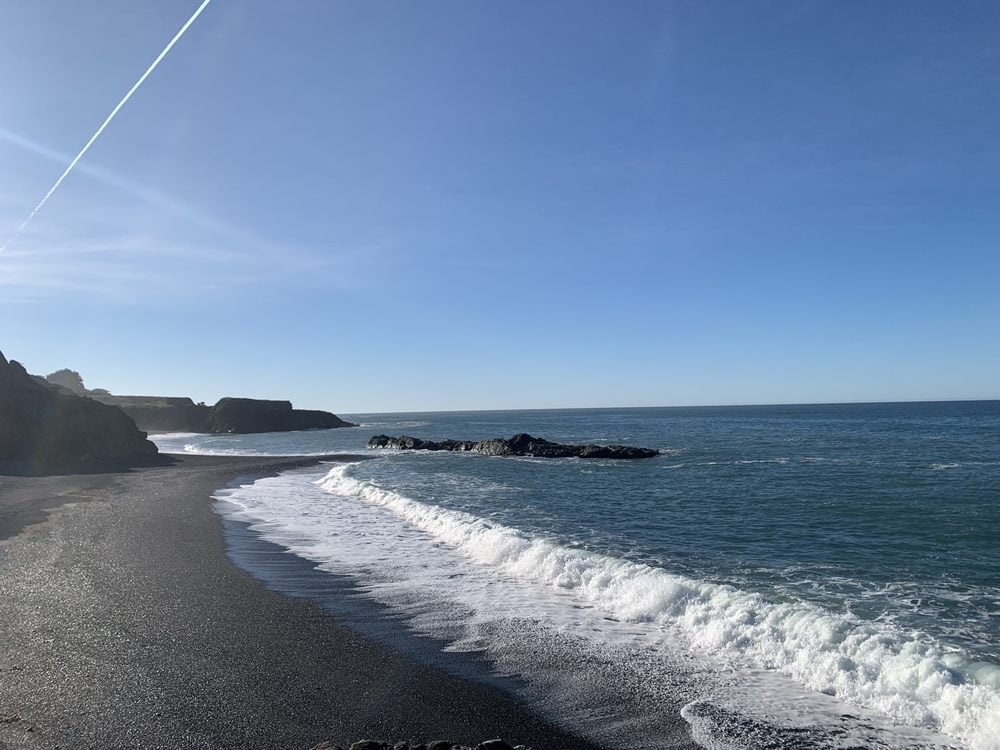
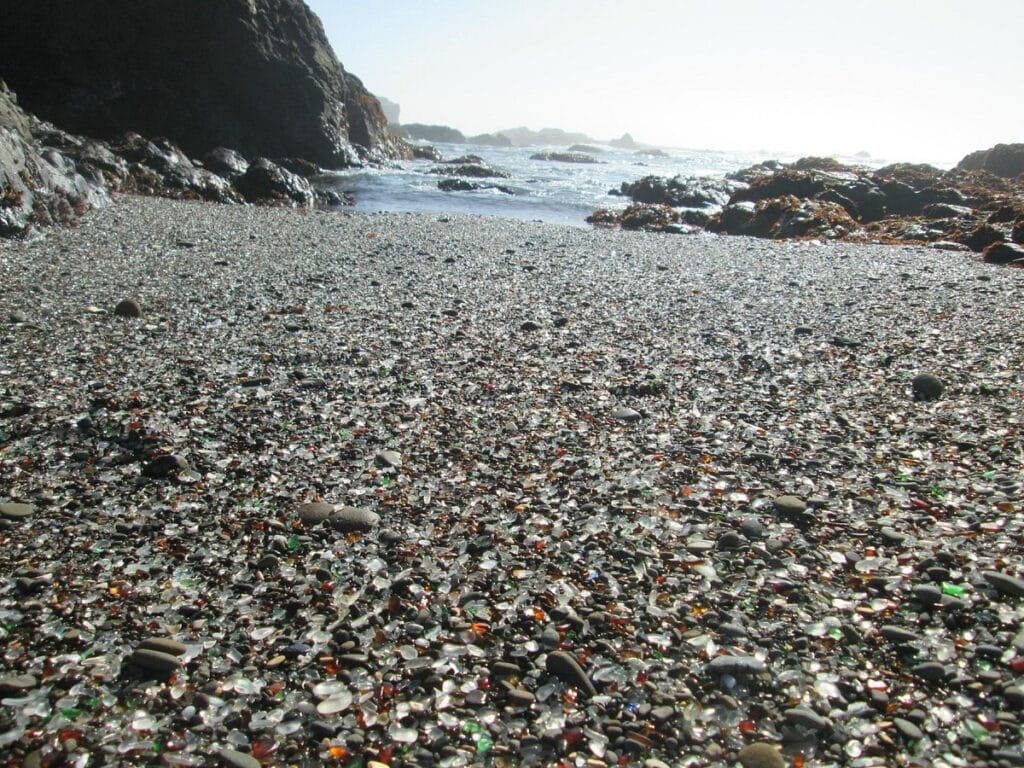
Redwood Skywalk
Located at the Sequoia Park Zoo, this breathtaking aerial adventure takes you 100 feet above the ground, offering a unique perspective of the majestic redwoods. Voted the #1 Aerial Adventure Park in the nation by USA Today readers, the Redwood Skywalk provides an exhilarating way to explore Northern California’s famous forests.
The Skywalk spans just under a quarter-mile round trip, allowing you to immerse yourself in the canopy of these towering giants. The walkway is mostly wheelchair accessible, the exception being the adventure segment.
Getting There:
- Once you’ve paid your admission to the Sequoia Park Zoo, head straight through to the walkway and follow the path as it curves left around the flamingo exhibit.
- In less than two minutes, you’ll reach the ascent ramp and see the Redwood Skywalk signage, ready to guide you on this incredible journey.
Hours of Operation: The Redwood Skywalk is open from Tuesday to Sunday, 10 a.m. to 5 p.m., with the last entry at 4 p.m.

Redwood National Park
Congratulations, you’ve made it to Redwood National Park!
Located roughly halfway between San Francisco and Portland, the park forms one of the world’s most spectacular and ancient forests.
Redwood National and State Parks are unique in that they are both national and collection of state parks, working together to protect this precious ecosystem. Visitors are greeted with incredible views of the towering trees, lush ferns, and diverse wildlife that make this place unique.
Visiting the Redwood National Park Visitor Center is a great starting point for your adventure. One of the highlights inside the center is the fog globe, a souvenir that beautifully captures the essence of the coastal redwoods. As someone who doesn’t usually purchase bigger gifts, I found this one well worth it, as it embodies the mystique of the fog-draped forest. Friends and family who visit often comment on its uniqueness as well.
While exploring the park, one fun activity is to go banana slug hunting. These bright yellow slugs are a fascinating part of the park’s ecosystem, often found among the damp foliage on the forest floor. Searching for these quirky creatures adds an extra layer of adventure to your visit, making it a hit for kids and adults alike.
Conclusion
As your journey along Highway 1 in Northern California ends, I hope you will carry the memories of breathtaking landscapes, fascinating history, and unique experiences unlike anywhere else. Highway 1 isn’t just a route—it’s an adventure that captures the essence of Northern California’s wild and wonderful spirit. Continue the fun by checking out our far-north California blog post (coming soon).
Heading South From Here? Be sure to check out our Southern California Posts:

